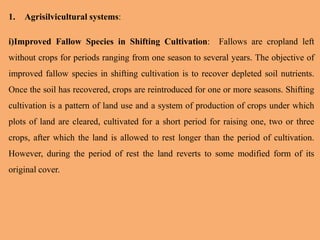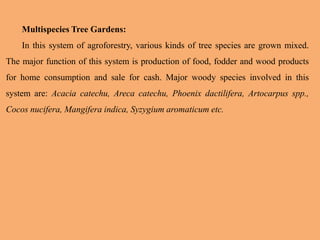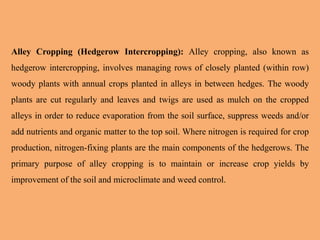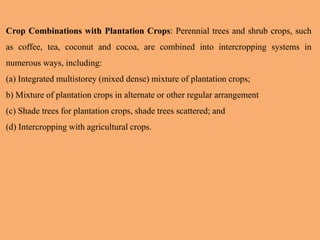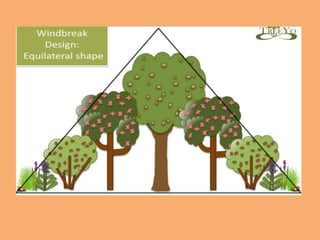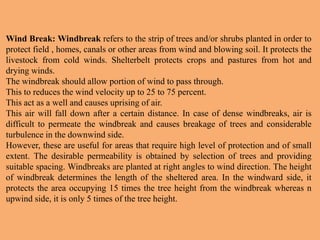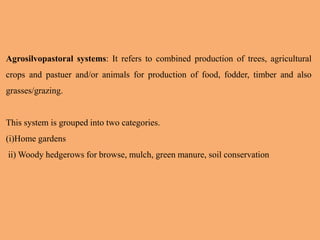This document discusses different systems of agroforestry classification. It defines key terms like system, subsystem, and practices. It then describes various agroforestry systems including:
1. Agrisilvicultural systems like improved fallow species, taungya systems, and multispecies tree gardens.
2. Silvopastoral systems including protein banks and live fences.
3. Factors for agroforestry system classification including spatial arrangements, roles of components, and social/economic features.










